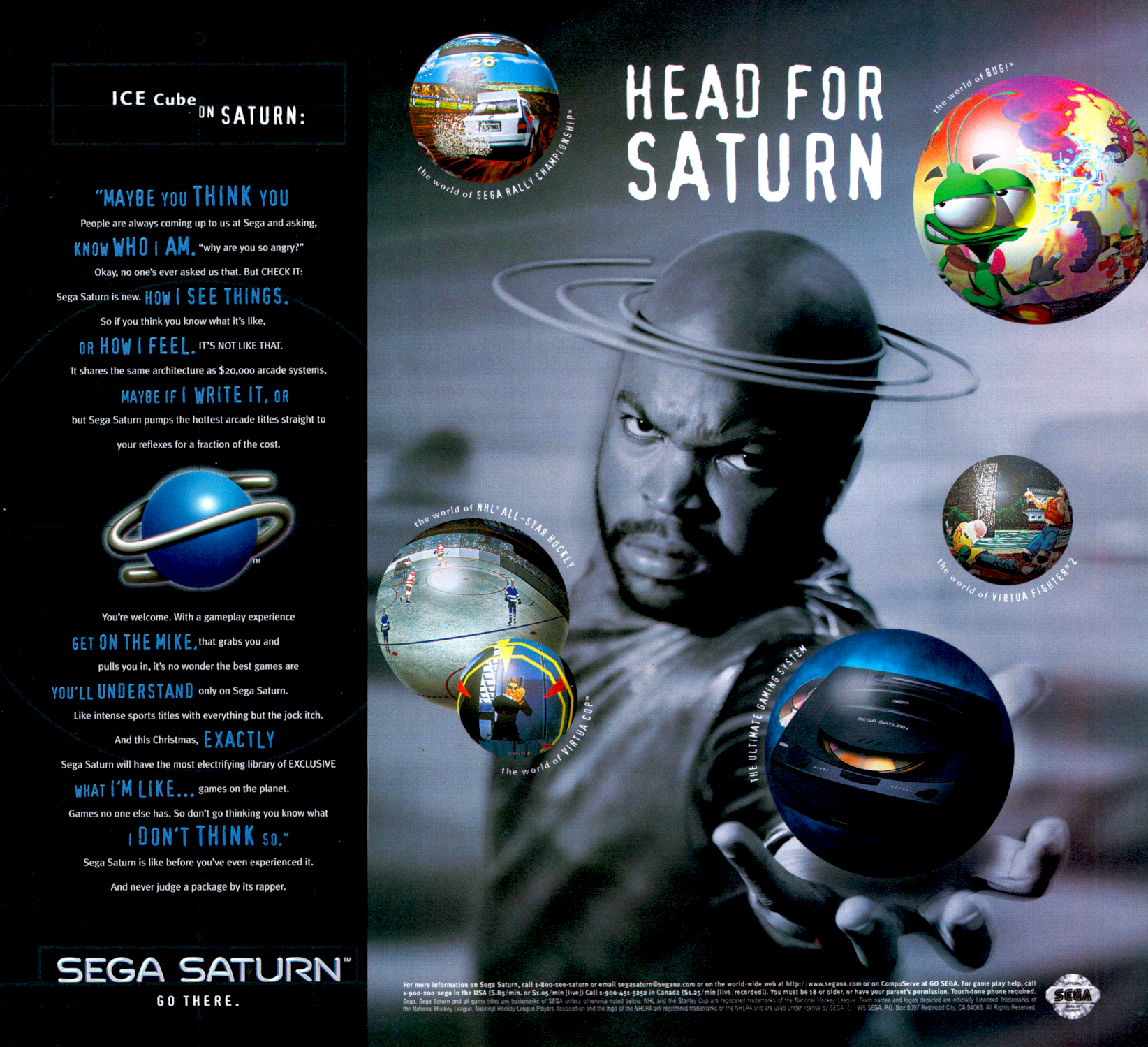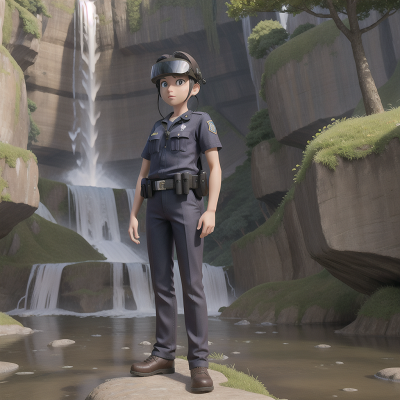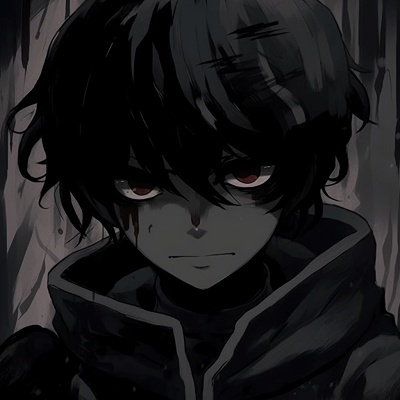Sega Saturn - Video Game Console From The Mid 90's
4 years ago • 5,157 Views • 4 Files
The Sega Saturn is a 32-bit fifth-generation home video game console developed by Sega and released on November 22, 1994 in Japan, May 11, 1995 in North America, and July 8, 1995 in Europe. The successor to the successful Sega Genesis, the Saturn has a dual-CPU architecture and eight processors. Its games are in CD-ROM format, and its game library contains several arcade ports as well as original games.
Development of the Saturn began in 1992, the same year Sega's groundbreaking 3D Model 1 arcade hardware debuted. Designed around a new CPU from Japanese electronics company Hitachi, another video display processor was incorporated into the system's design in early 1994 to better compete with Sony's forthcoming PlayStation.
The Saturn was initially successful in Japan, but failed to sell in large numbers in the United States after its surprise May 1995 launch, four months before its scheduled release date. After the debut of the Nintendo 64 in late 1996, the Saturn rapidly lost market share in the U.S., where it was discontinued in 1998. Having sold 9.26 million units worldwide, the Saturn is considered a commercial failure. The failure of Sega's development teams to release a game in the Sonic the Hedgehog series, known in development as Sonic X-treme, has been considered a factor in the console's poor performance.
Although the Saturn is remembered for several well-regarded games, including Nights into Dreams, the Panzer Dragoon series, and the Virtua Fighter series, its reputation is mixed due to its complex hardware design and limited third-party support. Sega's management has been criticized for its decisions during the system's development and discontinuation.
Background
Released in 1988, the Genesis (known as the Mega Drive in Europe, Japan and Australia) was Sega's entry into the fourth generation of video game consoles. In mid-1990, Sega CEO Hayao Nakayama hired Tom Kalinske as president and CEO of Sega of America. Kalinske developed a four-point plan for sales of the Genesis: lower the price of the console, create a U.S.-based team to develop games targeted at the American market, continue aggressive advertising campaigns, and sell Sonic the Hedgehog with the console.
The Japanese board of directors initially disapproved of the plan, but all four points were approved by Nakayama, who told Kalinske, "I hired you to make the decisions for Europe and the Americas, so go ahead and do it." Magazines praised Sonic as one of the greatest games ever made, and Sega's console finally took off as customers who had been waiting for the Super Nintendo Entertainment System (SNES) decided to purchase a Genesis instead. However, the release of a CD-based add-on for the Genesis, the Sega CD (known as Mega-CD outside of North America), was commercially disappointing.
Virtua Fighter, Virtua Racing
Sega also experienced success with arcade games. In 1992 and 1993, the new Sega Model 1 arcade system board showcased Sega AM2's Virtua Racing and Virtua Fighter (the first 3D fighting game), which played a crucial role in popularizing 3D polygonal graphics. In particular, Virtua Fighter garnered praise for its simple three-button control scheme, with strategy coming from the intuitively observed differences between characters that felt and acted differently rather than the more ornate combos of two-dimensional competitors.
Despite its crude visuals—with characters composed of fewer than 1,200 polygons—Virtua Fighter's fluid animation and relatively realistic depiction of distinct fighting styles gave its combatants a lifelike presence considered impossible to replicate with sprites. The Model 1 was an expensive system board, and bringing home releases of its games to the Genesis required more than its hardware could handle. Several alternatives helped to bring Sega's newest arcade games to the console, such as the Sega Virtua Processor chip used for Virtua Racing, and eventually the Sega 32X add-on.
Playstation vs Saturn
Within two days of its September 9, 1995 launch in North America, the PlayStation (backed by a large marketing campaign) sold more units than the Saturn had in the five months following its surprise launch, with almost all of the initial shipment of 100,000 units being sold in advance, and the rest selling out across the U.S.
A high-quality port of the Namco arcade game Ridge Racer contributed to the PlayStation's early success, and garnered favorable media in comparison to the Saturn version of Sega's Daytona USA, which was considered inferior to its arcade counterpart.] Namco, a longtime arcade competitor with Sega, also unveiled the Namco System 11 arcade board, based on raw PlayStation hardware.
Although the System 11 was technically inferior to Sega's Model 2 arcade board, its lower price made it attractive to smaller arcades. Following a 1994 acquisition of Sega developers, Namco released Tekken for the System 11 and PlayStation.
Directed by former Virtua Fighter designer Seiichi Ishii, Tekken was intended to be fundamentally similar, with the addition of detailed textures and twice the frame rate. Tekken surpassed Virtua Fighter in popularity due to its superior graphics and nearly arcade-perfect console port, becoming the first million-selling PlayStation game.


![Image For Post | **Playstation vs Saturn**
Within two days of its September 9, 1995 launch in North America, the PlayStation (backed by a large marketing campaign) sold more units than the Saturn had in the five months following its surprise launch, with almost all of the initial shipment of 100,000 units being sold in advance, and the rest selling out across the U.S.
A high-quality port of the Namco arcade game Ridge Racer contributed to the PlayStation's early success, and garnered favorable media in comparison to the Saturn version of Sega's Daytona USA, which was considered inferior to its arcade counterpart.] Namco, a longtime arcade competitor with Sega, also unveiled the Namco System 11 arcade board, based on raw PlayStation hardware.
Although the System 11 was technically inferior to Sega's Model 2 arcade board, its lower price made it attractive to smaller arcades. Following a 1994 acquisition of Sega developers, Namco released Tekken for the System 11 and PlayStation.
Directed by former Virtua Fighter designer Seiichi Ishii, Tekken was intended to be fundamentally similar, with the addition of detailed textures and twice the frame rate. Tekken surpassed Virtua Fighter in popularity due to its superior graphics and nearly arcade-perfect console port, becoming the first million-selling PlayStation game.](https://cdn.imgchest.com/files/vmy2pcnpo7j.png)










